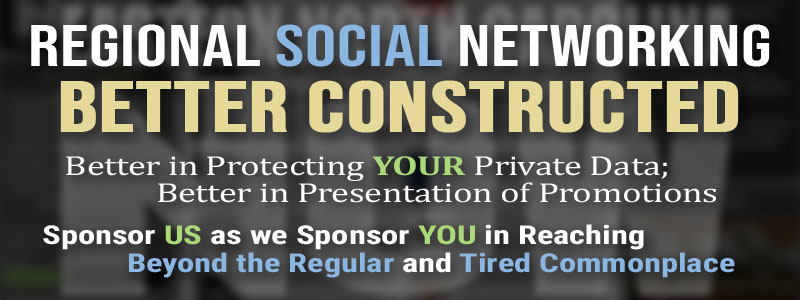"And the Band Played On" (A Comprehensive Look at the AIDS Epidemic in the 1980's) by Randy Shilts
I just finished reading a truly wonderful book - AND THE BAND PLAYED ON, by Randy Shilts. The book chronicles the AIDS epidemic of the 1980's, focusing on the cases, the symptoms, the mystery, the epidemiology, the panic, the politics, and ultimately the scientific breakthrough in identifying the causative agent, HIV (Human Immunodeficiency Virus) and its mode of infection and spread.
I remember living through that frightening era in North Jersey and watching it unfold on TV and in the news, and seeing the many billboards on the highways into New York City announcing how many lives the yet unknown disease had claimed. As a student thinking of going into the field of science, it presented a most compelling reason why research scientists are so badly needed in this country and around the world. Each week that scientists are unable to unravel the causes of new diseases, or to figure out how individuals are infected or how it is spread, or to understand how to treat those who suffer, the more lives are claimed.
In the case of AIDS, if only officials had listened to scientists rather than pander to politics and especially, identity politics, the lives of many thousands of young men and women, and children too, would have been spared. I hope the story of the AIDS epidemic will enlighten those when the next deadly or potentially-deadly disease hits. In fact, the author opens the book by explaining: "I would not have been able to write this book if I had not been a reporter for the San Francisco Chronicle, the only daily newspaper in the United States that did not need a movie star to come down with AIDS before it considered the epidemic a legitimate news story deserving thorough coverage."
The first documented case of a man dying from an opportunistic infection (pneumocystis carinii) due to a diminished immune system was in 1981. Cases followed of gay men presenting with a very rare skin cancer (Kaposi's sarcoma, which previously only affected elder Italian and Jewish men). They too were found to have a severely diminished immune system. It wasn't until two years later that the virus that killed off the critical Helper T cells (that mounts a person's immune response) was isolated and characterized. French scientist Luc Montagne published his findings in May 1983. Due to a rivalry with the American research team, Dr. Robert Gallo of the National Cancer Institute (NCI), treatment in the United States ignored the French discovery, allowing thousands to become infected and die. AIDS was a death sentence back then. Dr. Gallo would isolate and characterize the virus a year later (although he characterized it incorrectly; the French got it right), and with utmost arrogance and an ego unmatched in the field of research, would insist and assert that it was he who identified the AIDS virus. President Ronald Reagan chose to remain silent about the disease for most of his time in the White House, but in 1987, he finally addressed the epidemic. On April 2, he appeared before the College of Physicians in Philadelphia to deliver what would be his first "major speech" on AIDS, calling it "public enemy number one." And then the following month, on May 31, he agreed to speak at a dinner honoring the American Foundation for AIDS Research (amfAR), which was founded by Rock Hudson shortly before he passed away (on Oct. 2, 1985). The president had been invited by actress Elizabeth Taylor, who was named by Hudson to be the chairman, to offer a few remarks.
By the time Reagan finally agreed to address the epidemic at amfAR, 36,058 Americans had been diagnosed that year with the disease and 20,849 had already died.
By 1984, it was estimated that approximately 33-40% of all gay men in San Francisco and New York City were HIV-positive. The virus had a long latency period - approximately 5 years (that is, once infected, full-blown AIDS would set in about 5 years later). Consequently, the chances of contracting the disease, for those who hadn't already, were increasing rapidly and dangerously. As of 1986, after 5 years of seeing the epidemic unfold and trying to understand it, the cumulative number of AIDS cases in the United States reached 270,000 of which 179,000 died. By the spring of 1987, the disease had been reported in 113 countries (more than doubled the number of countries from just a year prior), with 51,000 persons infected outside the US. Most of those infected had visited the United States - New York City or San Francisco in particular. Others had visited Africa - the equatorial regions, such as Zaire. It was projected (correctly) that there would be over 3 million cases by 1991.
The book makes abundantly clear why the AIDS epidemic claimed so many lives, and needlessly so:
(1) Because it only affected gay men (at least in the first years). The 1980's was still an era of extreme homophobia. Gay men were considered perverts, freaks, and disease-carriers. The unspoken sentiment was that as long as the disease was contained and limited to the gay community, that was good. It was a good thing, the homophobic community believed, to get rid of the freaks. This sentiment, by the way, clearly drove public policy at the time, resulting in a lack of funding for the epidemic.
(2) Because it predominantly affected gay men. The gay community was fiercely protective of its civil rights and the advances they had made in being able to live their promiscuous, detached, sex-charged lifestyle. Bath houses (centers for mass anonymous sex, orgies, drugs, etc) and other gay sex clubs and bars catered to this promiscuous sex-obsessed lifestyle. When health officials advised first that public notices be posted to reduce the number of partners, refrain from risky gay sex, and to engage in safe-sex, and then that bath houses be shut down, the gay community flew into absolute outrage, threatening to sue officials and to obtain injunctions on any and all such actions. The fierce resistance to plans designed to educate the gay community and to help stem the spread of the deadly disease in order to save lives was the one thing that condemned thousands and thousands (maybe more) to a needless death. The gay community viewed such actions as public notices and closing bath houses as stigmatizing their kind, bringing more unwelcome discrimination upon them, un-doing the progress they had already made, and ultimately paving the way for society to round them up under the guise of being carriers for disease and segregating them from heterosexuals. They refused to allow any of such consequences. If they had to die for their rights, they would. And they did. The ironic thing is that the gay community to an overwhelmingly extent spread the disease as an identity group, through its lifestyle and its sexual practices, yet it didn't want to be stigmatized as an identity group by the disease when it came time to address its deadly contagion. It was always about saving lives and not about discrimination.
I recommend this book wholeheartedly.
Go Back
 |
"Robert F. Kennedy Jr. is a foolish man, full of foolish and vapid ideas," former Governor Chris Christie complained.
|
 |
more transgender violence
|
 |
Bureaucrats believe they set policy for spending taxpayer dollars usurping the directions of elected officials.
|
 |
several far left Democrat incumbents need defeat
|
 |
If a white person commits a crime against a black person, it is a national news story.
|
 |
would allow civil lawsuit against judge if released criminal causes harm
|
 |
good sign for next French election
|
 |
By Rev. Mark Creech
|
 |
"This highly provocative move was designed to interfere with our counter narco-terror operations."
|
























